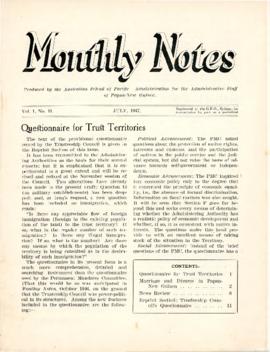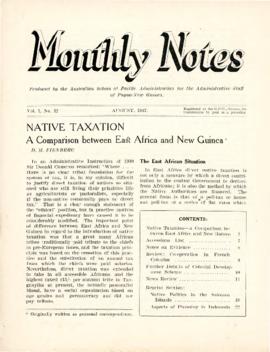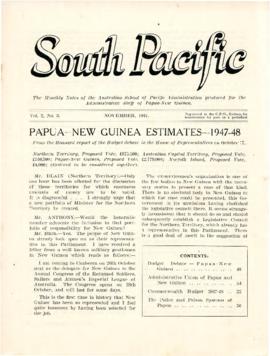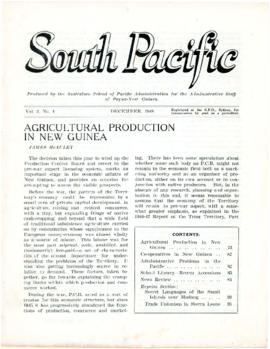- AU PMB MS 1367
- Collection
- 1969
Dr. Bryant Allen submitted this thesis as partial fulfilment of the requirements for the Master of Arts in Geography at Massey University in 1969. In 1976 he completed a PhD at the Australian National University titled Information flow and innovation diffusion in the East Sepik district, Papua New Guinea.
Dr. Allen carried out research in the Cook Islands in the 1960s and in Papua New Guinea from the 1970s to the present. His main interests are in the sustainability of agricultural systems and rural development. He has studied a number of PNG agricultural systems and has defined, mapped and described all PNG agricultural systems with Mike Bourke and Robin Hide. He has used the agricultural systems databases, to identify poor and disadvantaged areas in PNG, and has worked on food security and on the social and economic aspects of road maintenance. He is a co-author of the PNG Rural Development Handbook. He now works as a consultant for AusAID, FAO and the World Bank.
Foreward
Preface
Contents
List of Tables
List of Figures
List of Plates
Glossary of Terms
Introduction, p.1
Chapter I: The Mangaian Environment, p.3
Mangaia, p.3
Mangaian ecological conceptions, p.4
Soils, p.8
Climate, p.12
Mangaian crops, p.14
Ecological zones and land use, p.19
Chapter II: The Mangaian Society, p.28
Major population trends, 1821-1966, p.28
District populations, p.36
Social organisation, p.44
Land tenure, p.48
The village, p.53
Changing social status, p.57
Chapter III: Traditional Agriculture and the Cultivation of Food Crops, p.79
Present patterns of cultivation, p.65
Animals, p.76
Chapter IV: The Development of Commercial Agriculture
Initial moves towards surplus agricultural production, p.79
The introduction of cash crops, p.82
Increased contacts with the advanced economy, p.85
Post 1945 advances in commercial agriculture, p.92
Technological aid and a new market, p.92
Conclusions, p.96
Chapter V: The Extent of Commercialisation in 1967, p.101
Pineapple production, p.101
Sources of income, p.106
Technology, p.118
Patterns of labour, p.129
The use of credit, p.138
The occupational status of agriculture, p.143
Commercialisation and the perception of problems, p.154
Entrepreneurial activity, p.154
Conclusion, p.161
Conclusion, p.164
Appendices
Allen, Bryant








